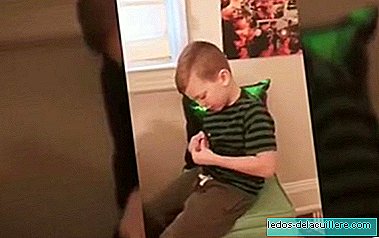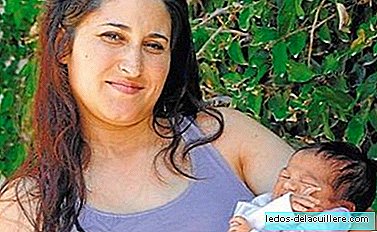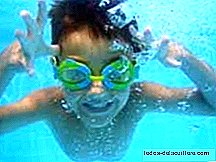
Gavin Clampett is a seven-year-old boy diagnosed two years ago with Tourette syndrome, a neurological disorder characterized by involuntary motor (physical) and phonic (vocal) tics. The boy makes grunts, exaggerated sniffing and flickering, which has made him a mockery for his classmates.
To prevent other children from disturbing his brother, Brynn, his nine-year-old sister has decided to record a video together to explain what the disorder is. A precious gesture to make the syndrome visible, which is often called "funny", something that does not help its normalization.
Gavin, who also has high-functioning autism and OCD, taught the video to his classmates to help them better understand the condition he has.
His sister explains in the video: "These unwanted and uncomfortable sounds and movements are called tics, but not as any tic. These tics can be very noticeable or notorious, silent or loud."
"They're like hiccups and I can't stop," adds Gavin.
The child describes what happens to him: "My jaw goes up and down ... I have noises where the saliva runs around my mouth and I have noises that sound like I'm sipping."
"Don't tell a child with Tourette syndrome to stop, because this stresses him even more"Brynn remembers that his brother and the other children who have Tourette Syndrome they are brave: "So be nice to them and don't treat them differently because they are just like you".
"When you watch Tourette's syndrome in the media or watch a movie, 99% of the time they use it as a joke, something that does not help to normalize the disease, "explains Rebecca, the children's mother.
Tourette syndrome
Tics are more frequent in childhood than is believed. They are characterized by sudden, convulsive, excessive and repetitive movements, sometimes even sounds that usually disappear after adolescence, although there are those who live with them throughout their lives.
The most serious diagnoses are chronic motor tics, 6.07 percent, and Tourette's syndrome, with 5.26 percent.
He Gilles de la Tourette syndrome is a neuropsychiatric disorder It begins in childhood or adolescence, characterized by multiple physical and vocal tics that last more than a year.
Usually the first symptoms are involuntary movements (tics) of the face, arms, limbs or trunk. These tics are frequent, repetitive and fast. The first most common symptom is a facial tic (blinking, contraction of the nose, grimaces). Other tics of the neck, trunk and limbs may be added.
These tics that the patient does not control can also be complicated and involve the entire body, such as kicking and stomping.
They can also manifest vocal tics, which usually occur along with the movements. Vocalisations can include grunts, throat clearing, screaming and barking. They can also be expressed as coprolalia (the involuntary use of obscene words or inappropriate words and phrases in the social context) or copropraxia, according to the American Tourette Association.
These uncontrollable tics are often a stigma for children who suffer misunderstanding from your surroundings. We remember that, from the families, from the schools, from the whole society, the children with this disorder must be protected and understood.
Via | Fox news
In Babies and more | Nervous tics in children, "I am neither crazy nor weird", a child with Asperger explains what this syndrome consists of












